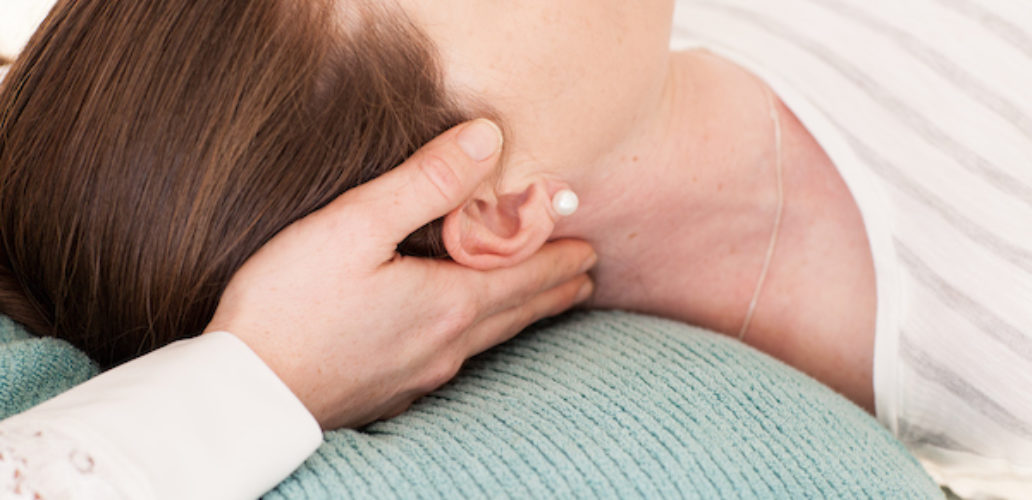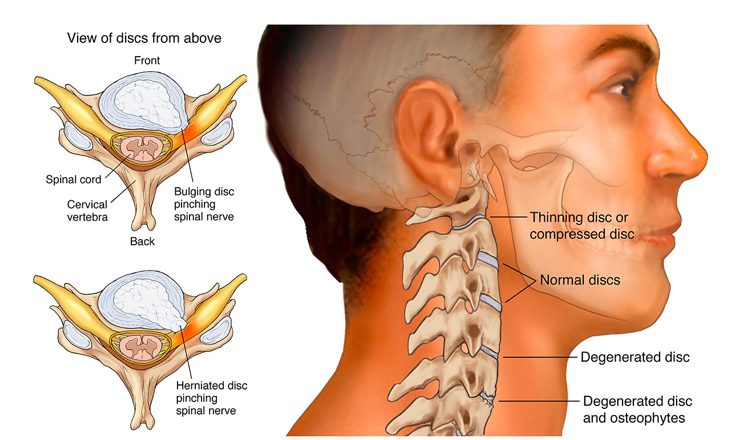
Cervical spine disc bulge
What is a cervical spine disc injury
Many people are familiar with a “disc bulge” or “slipped disc” in the lower back but did you know it can also occur in your neck?
Your spine is made up of three sections – “lumbar” in your lower back, “thoracic” in your upper back and the “cervical” spine in your neck.
Like the rest of your spine, your neck is made up of bones (vertebrae) stacked on top of one another, joined together by intervertebral discs (IVD). The IVD is made up of an outer ring of strong cartilage and a nucleus in the centre of a soft gel-like consistency. The IVD acts as a shock absorber in the spine.
As you get older or with wear and tear this disc may deteriorate and the outer ring can tear, allowing the soft gel nucleus to be pushed through the ring of cartilage giving the appearance that the disc is “bulging” or has “slipped”.
If the disc bulge is severe it may press on nerves as they exit the spine and cause symptoms such as severe pain, pins and needles and numbness in the neck, shoulders, arms or hands. This is because the nerves that come from your neck travel down your arms and into your hands.

A cervical disc bulge is more common in people over 40 years of age and is often a result of wear and tear over time. Some people with jobs that involve a lot of heavy lifting or people who participate in sports such as weight lifting may be at greater risk.
If you have symptoms of a cervical disc bulge, it can be confirmed by MRI scan. However, we know that correlation doesn’t always equal causation when it comes to disc bulges and a small percentage of people may have a disc bulge in their neck with no pain.
The majority of people with a cervical disc bulge will see improvement in their symptoms and substantial recovery without needing surgery in 4-6 months while complete recovery can range up to 2 years.
Osteopathy and Cervical disc injury
- Our osteopaths will perform a complete assessment to determine a diagnosis of your pain and refer you for an MRI scan or to another health care professional if necessary.
- Osteopathic techniques including soft tissue release, joint articulation, muscle stretching and mobilisation can be used to help reduce tension and inflammation.
- We will advise you on how you can avoid aggravating the symptoms including occupational, postural and sleeping modifications.
- When appropriate we will guide you through some exercises to help you manage the symptoms and get on the path to recovery.
